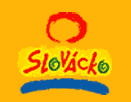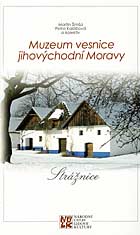
Folk craft
You can find out about various types of folk craft on this page, about their history, types of products and the traditional use.
Pottery
Hand made pottery both wheel-thrown and made  by hand, ceramics, earthenware jars, clay pots for milk, lard or plum jam, mugs, bowls, plates, costrels and wine or water jugs have been indispensable
objects of daily use since the beginning of the mankind. With the development of modern technologies and industrial products begin the originally practical goods to gain increasingly decorative character and design.
by hand, ceramics, earthenware jars, clay pots for milk, lard or plum jam, mugs, bowls, plates, costrels and wine or water jugs have been indispensable
objects of daily use since the beginning of the mankind. With the development of modern technologies and industrial products begin the originally practical goods to gain increasingly decorative character and design.
The
 influx of Anabaptists from the Swiss area of Brethren in the middle of the 16th century has brought with it Haban faience, which has started production of decorated ceramics. Today this takes the form
of sometimes very richly ornamental plates, mugs, jugs, vases, stoups, candelabra, table sets, flower pots, figural ceramics - folk musicians, nativity scene figures etc.
influx of Anabaptists from the Swiss area of Brethren in the middle of the 16th century has brought with it Haban faience, which has started production of decorated ceramics. Today this takes the form
of sometimes very richly ornamental plates, mugs, jugs, vases, stoups, candelabra, table sets, flower pots, figural ceramics - folk musicians, nativity scene figures etc.
Corn husk dolls
There were natural materials used in rustic environment.
When harvesting corn, the dried leaves were used to make dolls first as toys for children or as fun objects made by the youth: these rustling figures were hung secretly at night on door handles.
They have become the source of inspiration for making of these popular decorations and gifts, which are nowadays made by many women in Slovacko, the south-east region of Moravia. They are able to depict with style, beauty and great attention to the detail various motives of rustic life.
Among the most beautiful and gripping are various nativity scenes - ranging from the simpler ones to large sceneries, which can be a valuable and lasting part of family celebration of the Christmas period.
Straw and reed mace products
Straw and reed mace belong among frequently
belong among frequently
 used material
in the folk
environment.
used material
in the folk
environment.
It used to be widely available, but nowadays when corn is no longer harvested by hand using scythe but by combine harvester, which breaks up the long straws, it has become difficult to obtain suitable straw. To prepare the material is also difficult - it needs to be bleached and ironed before use.
Straw was used mainly to produce small decorative objects, such as Christmas tree decorations, it was used to decorate Easter eggs and there were also used to make bread baskets. Reed mace was similarly used to make straw baskets, bags, rags etc., for which it is still used these days.
Wooden products
 Wood has always offered a wide range of possibilities for use.
Wood has always offered a wide range of possibilities for use.
 It was easily available to everyone to make barrels, kegs, tuns, kits, pails, throughs, farmer's equipment such as rakes, scythe-handles, shovels etc.
Whole buildings were made of it - log cabins and their furnishings - chests, wardrobes, benches and tables,
and also household equipment - basins, bowl, salt cellars, wooden spoons, table spoons,
It was easily available to everyone to make barrels, kegs, tuns, kits, pails, throughs, farmer's equipment such as rakes, scythe-handles, shovels etc.
Whole buildings were made of it - log cabins and their furnishings - chests, wardrobes, benches and tables,
and also household equipment - basins, bowl, salt cellars, wooden spoons, table spoons,
 children's toys and musical instruments - flutes, fiddles,
also decorative wood-carved objects - nativity scenes, figurines of saints for niches and chapels.
children's toys and musical instruments - flutes, fiddles,
also decorative wood-carved objects - nativity scenes, figurines of saints for niches and chapels.
Locked into these hand crafted products are beauty, skill, creed and soul of a common man, who has been crafting them with love and humbleness.
Easter eggs
The decorated egg is one of the inherent attributes of Easter.
Girls rewarded boys for the salutary whipping by a green Easter stick, called "žila", "korbáč", "tatar", which brings new strength and energy in the new vegetative year, with eggs as a symbol of new life, new birth, which repeats itself in nature every spring.
This magical power if its was reinforced by the various ways of decoration, which varied from region to region. Wax batik, relief wax decoration, scrape ornaments, wrapped in rush or lined with straw, painted, more recently also decorated with fine wire or perforation, which gives the egg shell the delicate appearance of soft lace.
Many women and girls in Moravia still hand craft decorated eggs prior to Easter not only for the Easter caroler, but for others interested.
Wickerwork
 Weaving withy is one of the oldest folk crafts.
Weaving withy is one of the oldest folk crafts.
Abundance  of this material lead to mass production of hampers, baskets, bread baskets, but also perambulators or carriages.
of this material lead to mass production of hampers, baskets, bread baskets, but also perambulators or carriages.
Both green unpeeled and bleached peeled withe was used for wickerwork. Preparing withe is difficult, it has to be cut from the right type of willow during the winter period. It is then soaked. If it is not to be green, it needs to be boiled, which gives it reddish colour.
Peeled withe is whitish. The quality and durability of the final product depends both on the skills of the weaver and on how conscientious the preparation of material was. Hand made bread baskets and other larger baskets still find their place in modern households, pushing out plastic goods.
Underpainting on glass
Underpainting on glass is on of the prettiest folk techniques.
Such paintings with a picture of saints and patrons were an inseparable part of every country home, not just for some snobbish or purely esthetic reason. A set of glass paintings in the corner above a table and a bench created a sacred nook, which was meant to protect the house and its inhabitants during their lives and action.
These pictures could be bought at fun fairs, where they were brought from regions in which glass painting workshops conglomerated.
Their allure and tenderness can add peace, stability, protection and beauty even into our modern, sometimes overly technical homes or cottages.
Bobbin lace
Tender beauty of lace, which our grandmothers made themselves in spare time, mainly during winter, was part of and decorated many types of folk costumes in various regions.
Popular delicate bobbin lace was used in many varieties, e.g. "pásková", "tkanicová", "vláčková", "valenciánská", "dírková" and other. Nowadays can be their beauty best appreciated in bobbin lace pictures or cloth accessories, such as waistbands, collars or jewels.
Bells
Run bells have always accompanied with their sound people throughout their lives..
The sound of bells from bell towers called to prayer in the morning, at noon and in the evening, it announced time for church service and accompanied man at all important life occasions - at christening, wedding and funeral.
Bell tolled both on holidays and in case of emergencies (such as fire, natural disaster or war). They were often attributed with magic power to dissipate thunderhead which was threatening the harvest with hailstone.
The bells were therefore treated with respect and in wars people hid them to avoid requisition.
Even in a modern society do bell have their place, both the big ones in bell towers and the small bells which in many families announces the arrival of Baby Jesus on the Christmas Eve.
There still exist bell foundry workshops, where bells are made using traditional technologies that have been used for centuries and which are guarded as family secrets.
Blueprint
Blueprint is a hand craft method of linen printing, which used to be used in many place of our country.
Currently there are however only two last workshops left in Moravia, which produce product using this traditional method. This unique way of printing cannot be replaced by mass productions.
Canvas is covered with wooden, hand cut moulds. Repeated pressing of the mould to the fabric, one next to each other, which requires high skills and experience of the dyer, creates a pattern which stands out once the fabric is dipped into indigo.
Nowadays there is still a wide use for blueprint products - table cloth, place mats, pillow covers, curtains, aprons and many other small product as demonstrated by our wide offer.
Glass
Czech glass has always had tradition and a good name worldwide for its high quality.
Czech blow glass was distinguished for its perfection and high variety already in the middle ages. Typical and most popular product at that time were tall slim mace or flute shaped rummers, decorated with glass pearls.
These were popular among medieval rulers, gentry and well-off townsman. You too can treat yourself to such an experience.
These and many other types of traditional handcrafted glass products can be found in our store - goblets of various shapes, decanters, jugs, paperweights and many others.
V naší prodejně FOLKLORIKA si nyní můžete zakoupit velmi hodnotnou publikaci s názvem "Muzeum vesnice jihovýchodní Moravy", která Vás seznámí s podrobnostmi týkajícími se strážnického skanzenu.
Cena knihy je 150 Kč .
To enlarge click on the picture










